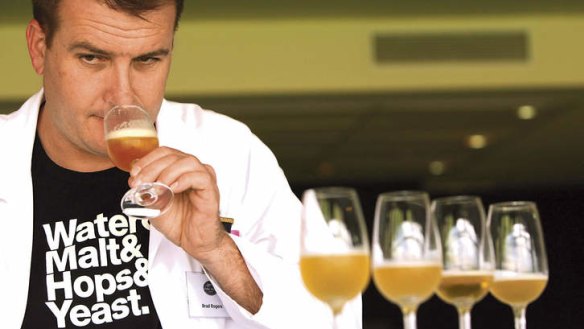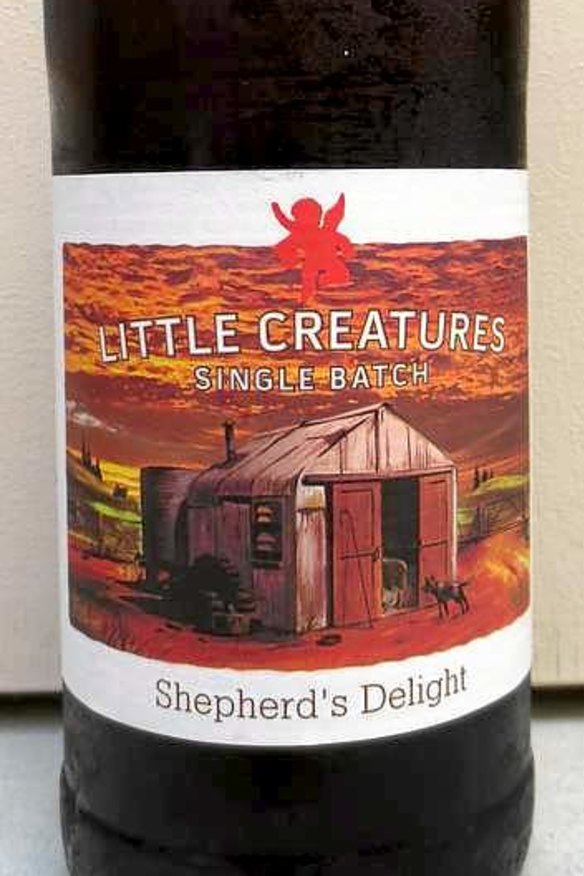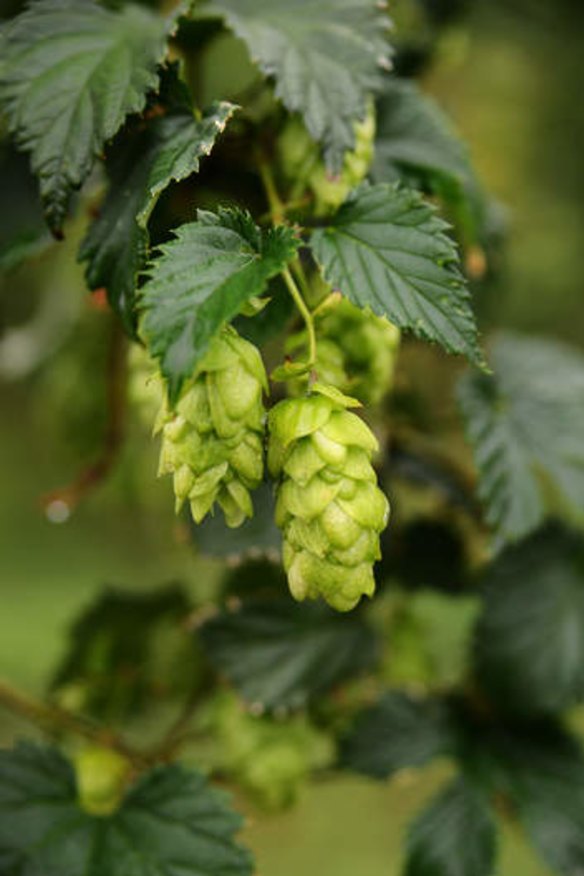Hops, steps and jumps
With drinkers around the world exploring beer's subtle variety, the market for Australian flavours is growing in leaps and bounds.

"That flavour … there's nothing like it in any other hop,'' says Brad Rogers, the director and chief brewer at Bryon Bay's Stone & Wood. He's talking about Galaxy, the standard bearer for a new generation of Australian hops that are gaining in popularity around the world. ''It's got that floral, fruit-driven, passionfruit thing. When we have punters coming around the brewery, we put a jar of that under their noses. The penny drops: that's where the flavour is coming from.''
Hops, the cone-shaped green flowers that add taste, aroma and bitterness to beer, could not be more fashionable in the world of craft beer at the moment - and Australian hops are rapidly becoming among the most coveted.
In the past five years, a number of varieties developed by Hop Products Australia - responsible for about 90 per cent of what is produced in this country - have been launched, reviving and changing the reputation of the domestic industry.

These new hops differ from those traditionally grown in Australia in one key way: more flavour. The trend for more interesting hops began in the US and varieties such as the American Citra (passionfruit, lychee and gooseberry), the New Zealand-grown Nelson Sauvin (so named because of its sauvignon blanc flavour) and Galaxy are in huge demand.
Now beer drinkers look out for certain hops in the same way as wine lovers might favour a pinot noir over a gamay. The difference, of course, is that in the world of beer, an exciting new hop comes along every few months.
In recent years, a number of the more exciting new hops have been Australian - and that hasn't gone unnoticed overseas. Brewers in the US and Britain are increasingly keen to try Australian hops.

The popularity of Galaxy, first grown commercially in 2009, has led to a boom in demand for Australian hops in Britain, says John Moss, the chief executive of importers Simply Hops. Even more traditional breweries, such as Marston's, from the West Midlands, and Lancashire's Thwaites, are now using Australian hops.
Indeed, the group imported 30 per cent more hops in 2013 than 2012 to deal with growing demand. ''Galaxy has been the trailblazer,'' he says. ''With more and more brewers having used and understood Galaxy, the reception we get when we get a new Australian hop is, 'Oh, wow. Can you send me some?'''
But if British brewers are waking up to the quality of Australian hops, they're simply following in their Australian colleagues' footsteps. Little Creatures Pale Ale, a beer now enjoyed around the world, is full of Australian hops, while Stone & Wood's flagship beer, Pacific Ale, derives much of its flavour from Galaxy. Rogers, who is also chairman of the Craft Beer Industry Association, says more and more brewers are getting behind native hops.
''I think brewers are definitely committed to Australian hops,'' he says. ''HPA are really getting the information out there; they're getting brewers to understand what there is, what a hop does. Hats off to them.''
Rogers visits the Derwent Valley in Tasmania - where HPA, which also grows hops in the Ovens Valley in Victoria, is based - once a year to inspect the crop when it is harvested in March. In recent years, that harvest has changed dramatically. Not too long ago, most hops in Australia - such as the Pride of Ringwood variety - were grown for their high bitterness levels, but changing demand means that more than half of the hops HPA now grows are flavour varieties; not just Galaxy, but Ella (floral, plenty of citrus and apricot), 2013 introduction Vic Secret (pineapple, herbal) and a number of others, too - and they're struggling to keep up with demand.
It's a remarkable turnaround for an industry that was facing potentially terminal problems as recently as five years ago. HPA chief executive Tim Lord says the motivation to change focus came not only from a desire to stave off extinction but also an understanding the world of beer was changing. In 2008, it was decided to take a look at some of the varieties that were coming out of the company's breeding program.
''We knew we were sitting on some tremendously interesting varieties,'' he says. ''One thing led to another and with the emergence of the craft movement in the US and here, we realised there was a market for them.
''There has been a tremendous take-up in Australia. We've had a lot of large and small brewers get behind it. A lot are grateful because in their early days they really didn't have a selection of Australian-grown hops.''
Given the popularity of hops, the future looks bright for the industry, not least because Australia is free of the diseases that bedevil hops in other countries.
It's a time to be optimistic, Lord says. ''I've just returned from the US. There's another 1600 breweries in planning there; there's a similar trend in Australia; there's a lot of change going on around the world. Plenty of those brewers want a bit of Australian character in their beer,'' he says.